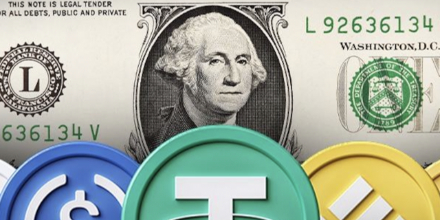Fed discusses stablecoins extensively in recent FOMC meeting following GENIUS Act passage
Federal Reserve officials focused significantly on stablecoins during their July 29-30 meeting, analyzing potential impacts on the financial system following the passage of the GENIUS Act.
In the minutes released on Aug. 20, the members of the Federal Open Market Committee (FOMC) mentioned the digital tokens multiple times.
Stablecoins discussed extensively
The officials mentioned “payment stablecoins” extensively, due to the discussions taking place less than two weeks after President Donald Trump signed the GENIUS Act into law on Jul. 18.
The bill established the first comprehensive federal framework for stablecoin regulation, and FOMC members cited it as a driver for growth in stablecoin usage.
The minutes also categorized stablecoins alongside “private liquidity funds” and “offshore MMFs” as alternative investment vehicles that “have grown rapidly and were noted as relatively less transparent” compared to traditional money market funds.
The minutes align with Fed Chair Jerome Powell’s remarks throughout this year.
During an April 16 speech, Powell called for a regulatory framework for stablecoins and recognized these assets as a digital product that could capture a broad appeal. He also showed a neutral stance towards Bitcoin, which he deemed digital gold instead of a dollar competitor.
Fed officials are preparing for increased stablecoin adoption under the new regulatory framework, conducting what amounts to a comprehensive risk assessment of potential market developments.
Efficiency acknowledged
FOMC participants recognized potential benefits from expanded stablecoin adoption, particularly for payment system efficiency.
The Fed officials also noted that stablecoins could boost demand for the underlying assets required to collateralize the tokens, particularly US Treasury securities, which serve as the primary backing for most major stablecoins.
Despite recognizing benefits, Fed participants raised multiple concerns about broader financial system implications. The minutes revealed officials’ worry that stablecoins “could have broader implications for the banking and financial systems as well as monetary policy implementation.”
FOMC members emphasized the need for “close attention, including monitoring of the various assets used to back stablecoins.”
The extensive discussions on the last FOMC meeting suggest the central bank views stablecoins as increasingly relevant to its monetary policy mandate and financial stability responsibilities.
Further, the minutes indicate federal financial regulators are taking a proactive approach to understanding how digital payment systems might integrate with or challenge traditional monetary infrastructure.
The post Fed discusses stablecoins extensively in recent FOMC meeting following GENIUS Act passage appeared first on CryptoSlate.
Disclaimer: The content of this article solely reflects the author's opinion and does not represent the platform in any capacity. This article is not intended to serve as a reference for making investment decisions.
You may also like
With retail investors leaving, what will drive the next bull market?
Bitcoin has recently plummeted by 28.57%, leading to market panic and a liquidity crunch. However, long-term structural positives are converging, including expectations of Federal Reserve rate cuts and SEC regulatory reforms. The market currently faces a contradiction between short-term pressures and long-term benefits. Summary generated by Mars AI. The accuracy and completeness of this summary are still being iteratively improved.

Tether's "son" STABLE crashes? Plunges 60% on first day, whale front-running and no CEX listing spark trust panic
The Stable public blockchain has launched its mainnet. As a project associated with Tether, it has attracted significant attention but performed poorly in the market, with its price plummeting by 60% and facing a crisis of confidence. It is also confronted with fierce competition and challenges related to its tokenomics. Summary generated by Mars AI. The accuracy and completeness of the content are still being iteratively updated.

Hassett: The Fed has ample room to cut interest rates significantly.
From "Crime Cycle" to Value Reversion: Four Major Opportunities for the Crypto Market in 2026
We are undergoing a “purification” that the market needs, which will make the crypto ecosystem better than ever before, potentially improving it tenfold.

